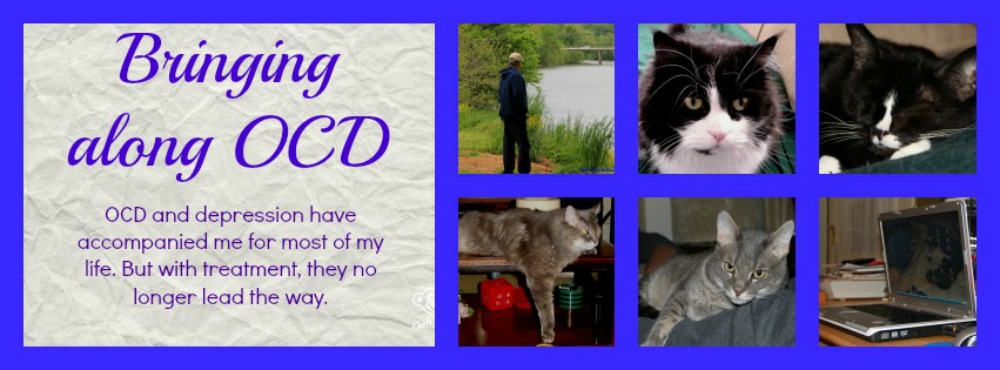I feel the effects of the adrenaline, a hyper feeling. My heart beats faster. Sometimes my arms feel numb. I can’t settle down to do anything. I walk around the house a lot, watch TV for a couple of minutes, go into the kitchen and eat something, fast, then open up a book and try to read, then walk around some more.
If I’m at work, I get up and walk around, too. When at my desk, I swing around in my chair. I write in spurts before I have to stop again.
My jaw stays tight. Every now and then, I realize I have my lips pursed, held firmly, tightly.
I may have nausea. I may have diarrhea. I may get a headache. My hands may shake.
I feel exhausted much of the time. But my sleep is interrupted—I wake up numerous times during the night and sometimes have trouble going back to sleep.
I feel like something bad is going to happen. I don’t know what, but it will be bad, if I go by how I feel.
Sometimes I lie in bed at night and say over and over to myself, I’m afraid. Sometimes I whisper it aloud if Larry hasn’t come to bed yet.
I’m afraid and I don’t know why.
That is my generalized anxiety disorder. Most of the time, I don’t have all of these symptoms, but I’m a worrier and I’m tense most of the time, finding it hard to relax.
According to “Generalized Anxiety Disorder: When Worry Gets Out of Control,” a publication on the website of the National Institute of Mental Health, generalized anxiety disorder, or GAD, is an anxiety disorder that causes sufferers to worry about things without a clear reason to:
“All of us worry about things like health, money, or family problems. But people with GAD are extremely worried about these and many other things, even when there is little or no reason to worry about them. They are very anxious about just getting through the day. They think things will always go badly. At times, worrying keeps people with GAD from doing everyday tasks.”
The publication goes on to list the symptoms of GAD:
*Worrying very much about everyday things
*Trouble controlling constant worries
*Knowing they worry much more than they should
*Not being able to relax
*Hard time concentrating
*Easily startled
*Trouble falling asleep or staying asleep
*Feeling tired all the time
*Headaches, muscle aches, stomachaches, unexplained pains
*Difficulty swallowing
*Trembling or twitching
*Irritability, sweating a lot, feeling light-headed or out of breath
*Having to go to the bathroom a lot
The booklet goes on to say that treatment for GAD is usually psychotherapy, especially cognitive behavior therapy, medication or both.
I take medication and I’m in therapy, both of which help my GAD. I’m finding that meditation, being mindful as often as possible and deep breathing also help. So does reading or doing some other enjoyable activity.
And I’m working on changing the way I think about things. For example, I try to catch myself when I’m in catastrophe mode and remind myself that I’m making the situation bigger than it is.
Still, I have those times of anxiety. Sometimes I don’t know what causes them. I go through all the things that could be worrying me—personal, work—but sometimes I can’t figure it out.











